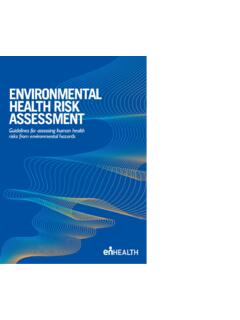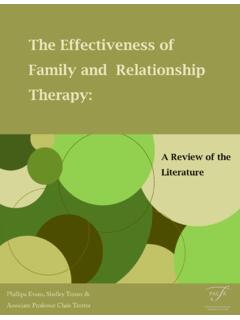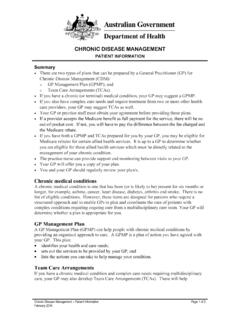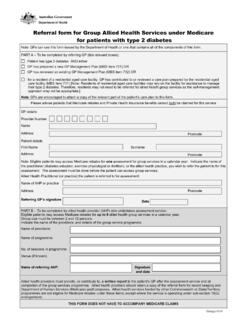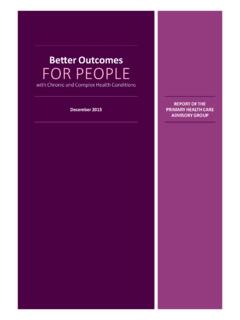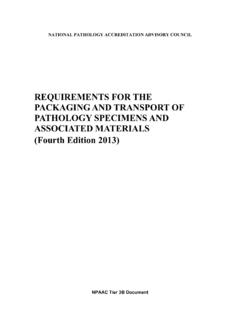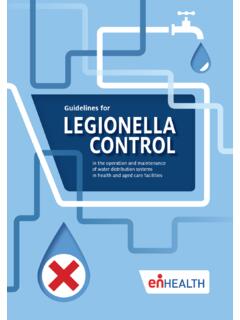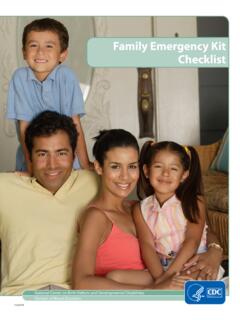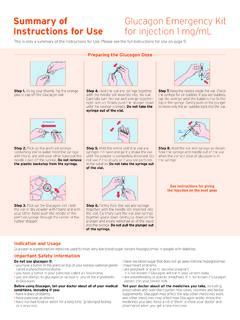Transcription of EMERGENCY TRIAGE EDUCATION KIT - Department of Health
1 EMERGENCY TRIAGE EDUCATION TRIAGE EDUCATION KITD epartment of Health and Ageing EMERGENCY TRIAGE EDUCATION KitDepartment of Health and Ageing EMERGENCY TRIAGE EDUCATION KitDepartment of Health and Ageing EMERGENCY TRIAGE EDUCATION KitISBN: 1-74186-411-9 Online ISBN: 1-74186-412-7 Publications Approval Number: P3-5240 Copyright Statement: (c) Commonwealth of Australia 2009 This work is copyright. Apart from any use as permitted under the Copyright Act 1968, no part may be reproduced by any process without prior written permission from the Commonwealth.
2 Requests and inquiries concerning reproduction and rights should be addressed to the Commonwealth Copyright Administration, Attorney-General s Department , Robert Garran Offices, National Circuit, Barton ACT 2600 or posted at Box 9848, CANBERRA CITY ACT 2601 Website: 2007 Department of Health and Ageing EMERGENCY TRIAGE EDUCATION KitDepartment of Health and Ageing EMERGENCY TRIAGE EDUCATION KitDepartment of Health and Ageing EMERGENCY TRIAGE EDUCATION KitIIICONTENTS FOREWORD ACKNOWLEDGEMENTS INTRODUCTION CHAPTER 1: INTRODUCTION Statement of purpose Learning outcomes Learning objectives Content CHAPTER 2.
3 THE AUSTRALASIAN TRIAGE SCALE Statement of purpose Learning outcomes Learning objectives Content CHAPTER 3: COMMUNICATION ISSUES Statement of purpose Learning outcomes Learning objectives Content CHAPTER 4: TRIAGE BASICS Statement of purpose Learning outcomes Learning objectives Content CHAPTER 5: MENTAL Health TRIAGE Statement of purpose Learning outcomes Learning objectives Content CHAPTER 6.
4 RURAL AND REMOTE TRIAGING Statement of purpose Learning outcomes Learning objectives Content V VI VII11 1 1 2 99 9 9 10 1313 13 13 14 18 18 18 18 19 2626 26 26 27 35 35 35 35 36 Department of Health and Ageing EMERGENCY TRIAGE EDUCATION KitIVDepartment of Health and Ageing EMERGENCY TRIAGE EDUCATION KitDepartment of Health and Ageing EMERGENCY TRIAGE EDUCATION KitCHAPTER 7: PAIN ASSESSMENT AT TRIAGE Statement of purpose Learning outcomes Learning objectives Content CHAPTER 8: PAEDIATRIC TRIAGE Statement of purpose Learning outcomes Learning objectives Content CHAPTER 9: PREGNANCY AND TRIAGE Statement of purpose Learning outcomes Learning objectives Content CHAPTER 10.
5 MEDICO LEGAL ISSUES Statement of purpose Learning outcomes Learning objectives Content INDEX 3939 39 39 40 43 43 43 43 44 50 50 50 50 51 5555 55 55 55 60 Department of Health and Ageing EMERGENCY TRIAGE EDUCATION KitDepartment of Health and Ageing EMERGENCY TRIAGE EDUCATION KitDepartment of Health and Ageing EMERGENCY TRIAGE EDUCATION KitVFOREWORDIn 2005 06, nearly million people presented to EMERGENCY departments in larger Australian hospitals.
6 Only 12 per cent were non-urgent cases. Sixty nine per cent of people were seen within the time recommended for their TRIAGE category, with half of this number seen in less than 24 minutes. Despite the pressure on TRIAGE staff working, the figures show that they mostly get it right. Providing accurate and timely assessments of seriously ill patients, based on urgency, is what makes the TRIAGE system work. A clinically based system of triaging ensures that patients needing priority medical care get it. The EMERGENCY TRIAGE EDUCATION Kit aims to provide further support to TRIAGE Nurses.
7 This revised edition includes more than 150 scenarios designed to strengthen TRIAGE Nurses assessment skills. It also covers complex areas such as mental Health , paediatrics, obstetrics and rural/remote TRIAGE . It aims to help nurses provide better assistance to people presenting to EMERGENCY departments. The kit was funded by the Commonwealth Government and developed in collaboration with the Australasian College of EMERGENCY Medicine, the Australasian College of EMERGENCY Nursing, the College of EMERGENCY Nursing Australasia and the Council of Remote Area Nurses of Australia.
8 Tony Abbott MP Minister for Health and Ageing Department of Health and Ageing EMERGENCY TRIAGE EDUCATION KitVIDepartment of Health and Ageing EMERGENCY TRIAGE EDUCATION KitDepartment of Health and Ageing EMERGENCY TRIAGE EDUCATION KitACKNOWLEDGEMENTSMany people and organisations have been involved in the development of this kit. Their feedback and contribution is gratefully contributing authors were: University of Melbourne, School of Enterprise Marie Frances Gerdtz Julie Considine Natisha Sands Carmel Josephine Stewart Diane Crellin Wendy Elizabeth Pollock.
9 LearnPRN Robin Tchernomoroff Kaye Knight. Amanda National EDUCATION Framework for EMERGENCY TRIAGE Working Party, oversaw production and validation of the EDUCATION tools detailed in this members were: Dr Matthew Chu, Australasian College for EMERGENCY Medicine (ACEM), Director of EMERGENCY Medicine, Canterbury Hospital Ms Tracey Couttie, Paediatrics TRIAGE Clinical Nurse Consultant, Paediatrics TRIAGE , EMERGENCY Department , Wollongong Hospital Ms Judy Harris, College of EMERGENCY Nursing Australasia (CENA), State Management Committee member of CENA, Redcliffe Hospital Dr Marie Gerdtz, Nurse EDUCATION , Lecturer in Nurse EDUCATION , School of Post Graduate Nursing, University of Melbourne Mr Audas Grant, Rural Clinical Nurse Consultant, Clinical Nurse Consultant, Albury Base Hospital Dr Didier Palmer, EMERGENCY Medicine, Senior Lecturer and Consultant, EMERGENCY Physician, Royal Darwin Hospital Ms Cecily Pollard, Mental Health Liaison Nurse, Liaison Psychiatry Unit, Royal Hobart Hospital Ms Karen Schnitzerling, Director of Nursing.
10 West Coast District Hospital. Council of Remote Area Nurses of Australia (CRANA) Ms Robin Tchernomoroff, Board Member, Australian College of EMERGENCY Nursing Ltd (ACEN), Director LearnPRN Pty Ltd Associate Professor Jeff Wassertheil, Australasian College for EMERGENCY Medicine (ACEM), Director EMERGENCY Medicine, Peninsula Health Mr Rob Wyber-Hughes, Director, Council of Remote Area Nurses of Australia (CRANA), Mr Gordon Tomes, Project Director, Department of Health and Ageing, Acute Care Department of Health and Ageing would also like to acknowledge the assistance of the expert panel of TRIAGE Nurses throughout Australia for validating the scenarios provided in this kit.

